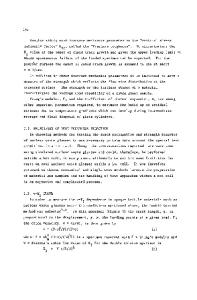95 Mo NMR Study of Crystallization in Model Nuclear Waste Glasses
- PDF / 917,913 Bytes
- 7 Pages / 612 x 792 pts (letter) Page_size
- 93 Downloads / 279 Views
1124-Q03-06
Mo NMR Study of Crystallization in Model Nuclear Waste Glasses Scott Kroeker,1 Ian Farnan,2 Sophie Schuller3 and Thierry Advocat4
1
Department of Chemistry, University of Manitoba, Winnipeg, Manitoba, R3T 2N2, Canada Department of Earth Sciences, University of Cambridge, Cambridge, CB2 3EQ, U.K. 3 CEA Valrhô Marcoule, DEN/DTCD/SECM/LDMC, BP 17171, 30207 Bagnols/Céze, France 4 CEA Saclay, DEN/DANS/DPC/SECR, 91191 Gif-sur-Yvette, France 2
ABSTRACT 95
Mo magic-angle spinning nuclear magnetic resonance (MAS NMR) spectroscopy is surprisingly sensitive to the local environment of tetrahedral molybdate species. A series of compounds related to expected crystallization products in nuclear waste glasses are probed to calibrate their spectral characteristics. Glasses formed with fast and slow quenching show a glassy peak corresponding to tetrahedral molybdate species. With slow quenching, a prominent sharp peak is observed, representing crystallinity. In sodium-borosilicate glasses with 2.5 mol% MoO3, the sharp peak corresponds to pure crystalline sodium molybdate. Cesium-sodium and lithium-sodium borosilicate glasses with Mo show crystalline peaks as well, and suggest that NMR may potentially be used to characterize mixed-cation molydates and more complex phase assemblages. While precise quantification of Mo in different phases is likely to be timeconsuming, reasonable estimates can be obtained routinely, making 95Mo MAS NMR a useful tool for investigating phase separation and crystallization in model nuclear waste materials. INTRODUCTION The requirement of nuclear wasteforms to incorporate a large number of chemically diverse ions without compromising long-term durability is exacting, and has motivated extensive research into suitable materials. Borosilicate glasses have been selected in many countries as wasteforms for high-level liquid waste from fuel reprocessing, due to their excellent solvent properties, high durability and favourable processing procedures. However, certain fission products can induce macroscopic liquid-liquid phase separation during formation, and crystallization during cooling. Depending of the nature (alkali or alkaline earth) of the crystalline phases, the durability of the bulk wasteform can suffer, and melter corrosion can be accelerated. Molybdenum, for example, is known to form a complex crystalline molybdate referred to as “yellow phase” in English and French nuclear glasses, [1, 2] which possesses a soluble fraction. To prevent yellow phase formation, waste loading is currently limited to keep Mo concentrations below a certain threshold. While this solution may be effective in eliminating yellow phase formation, it is not particularly efficient, as it increases the waste glass volume. To increase the level of molybdenum oxide that can be accommodated, new wasteforms prepared at higher temperatures (1200°C) have been designed to meet both microstructural and long-term behaviour standards. [3] Studying the roles of boron, sodium and calcium oxides to determine the chemical and
Data Loading...










